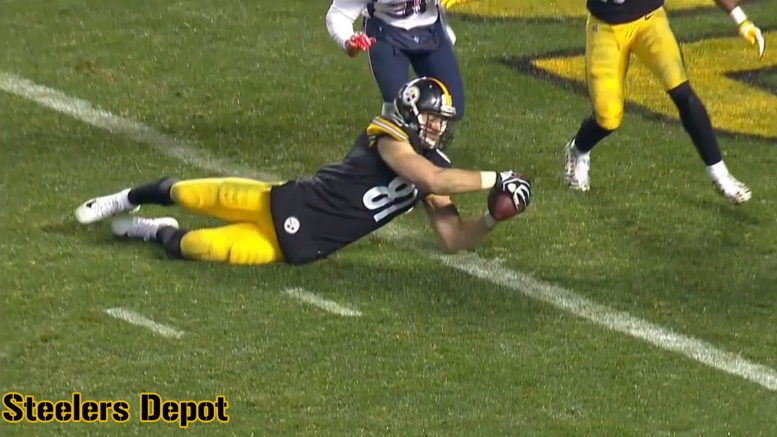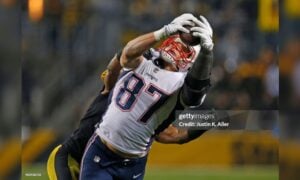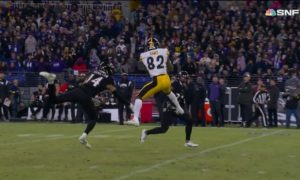The NFL this offseason endeavored to fix many problems, some of which they created themselves, others that they fabricated entirely. Others were legitimate problems, such as the catch rule, but whether or not their ‘fix’ actually proves to be just that will be determined only be how it is actually carried out in practice during the 2018 season and beyond.
Aiming to create a more objective standard to help determine what is and is not a catch, the league’s owners back during the Annual League Meeting approved changes to the catch rule that would define post-catch actions that would satisfy the requirement for completion of a catch.
Now that the rules have been formally codified and written into the rulebook, we have a more complete list of those actions than we did before, as Mike Florio points out for Pro Football Talk. In addition to the previously-cited actions of taking a third step or extending your body, other possible acts common to the game were listed as well.
As part of the official rulebook, it is now clear that acts such as tucking the football away to protect it, turning upfield, and making an effort to fend off a defensive player all are sufficient to satisfy the standards for completing the process of a catch.
Also included in the rule is the subjective sentiment that officials can rule a catch has been completed if he deems that the pass-catcher would have been able to perform one of the acts listed above, whether or not he actually did so.
While there was a fairly major controversy or two on a nearly annual basis for a few years now, support for changes to the catch rule really came to a head after the Pittsburgh Steelers lost to the New England Patriots in the final seconds of a Week 15 game that essentially decided homefield advantage in the AFC.
Tight end Jesse James caught the football from the 10-yard line just short of the goal line and reached over, extending the ball across the goal line for what was initially ruled a touchdown, which would have given the Steelers the lead with less than a minute to play.
Head of Officiating Al Riveron, however, ruled that the play was not a touchdown because James was in the process of going to the ground as he caught the football, and when a player is going to the ground, he has to maintain possession of the football throughout contact with the ground.
‘Surviving the ground’ is no longer an element of the current rule. James satisfied the catch rule under the new language on multiple counts, most especially for turning upfield and extending the ball.
When it looks like a catch, smells like a catch, and tastes like a catch, but is still not a catch, you know there’s a problem with how you define a catch. That is what the NFL finally came to realize this offseason and chose to act on it.








